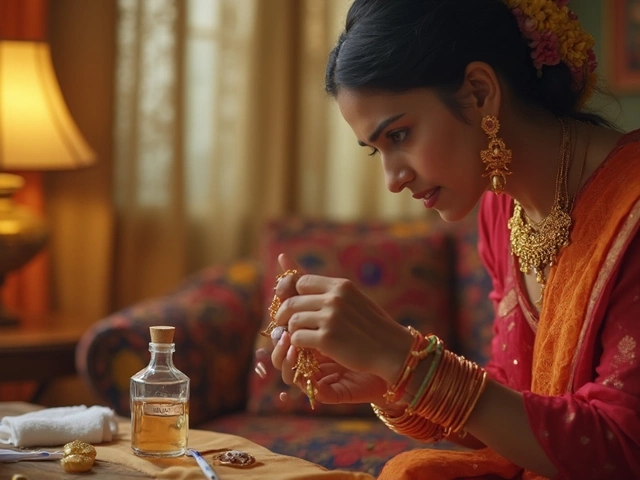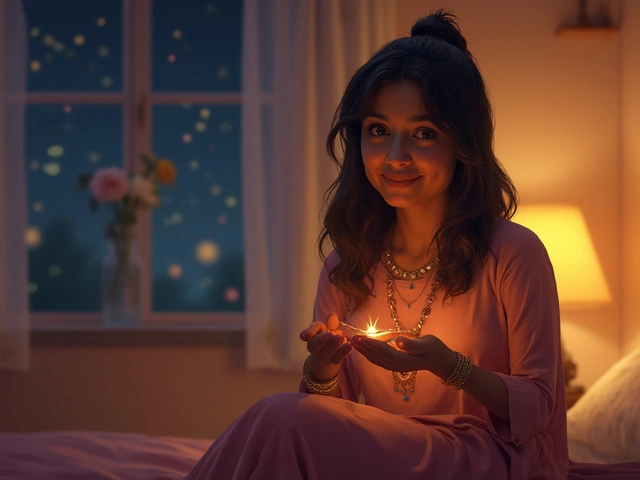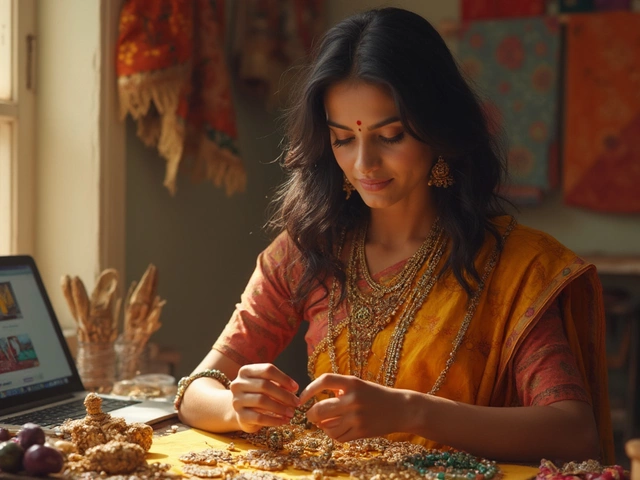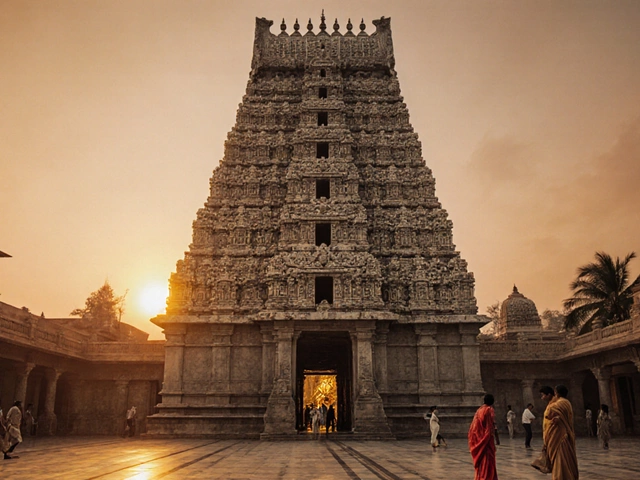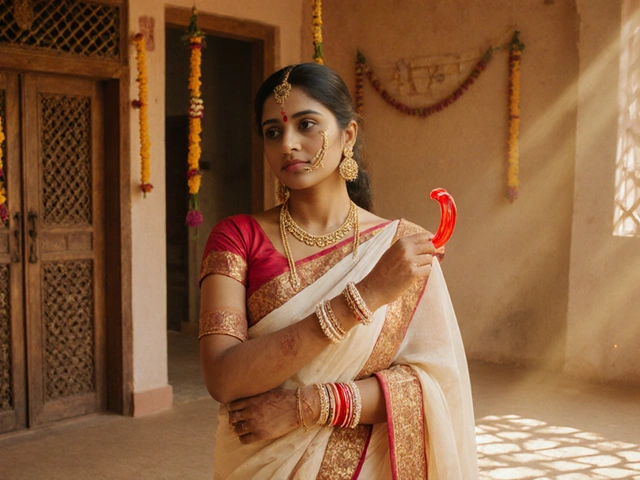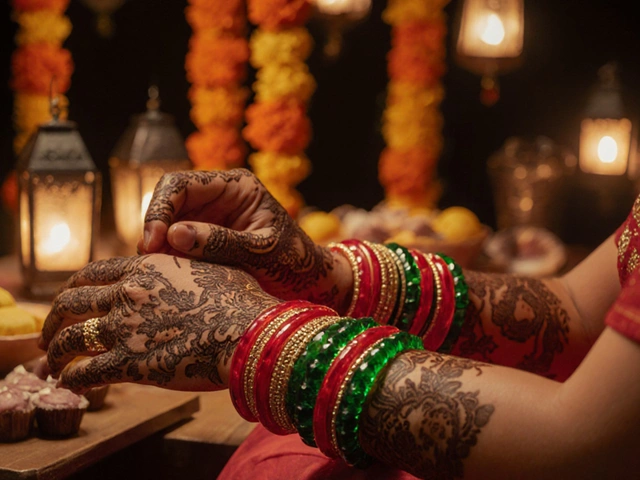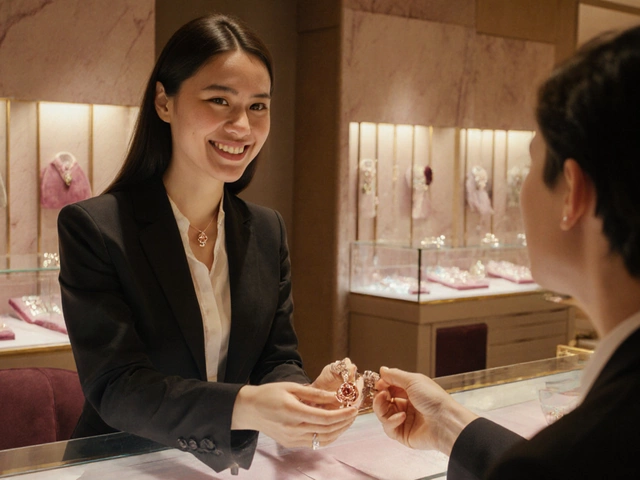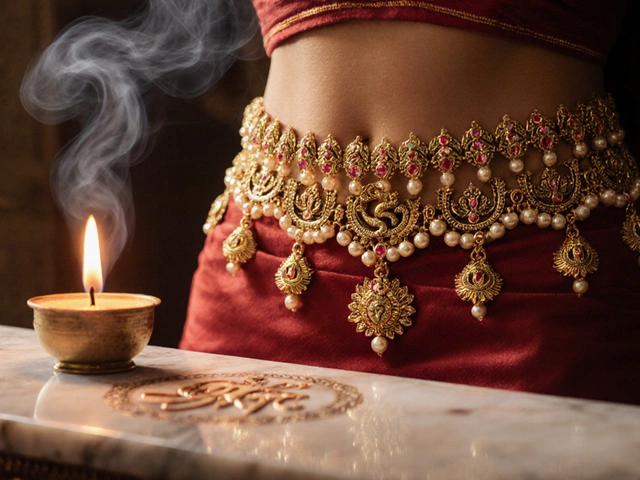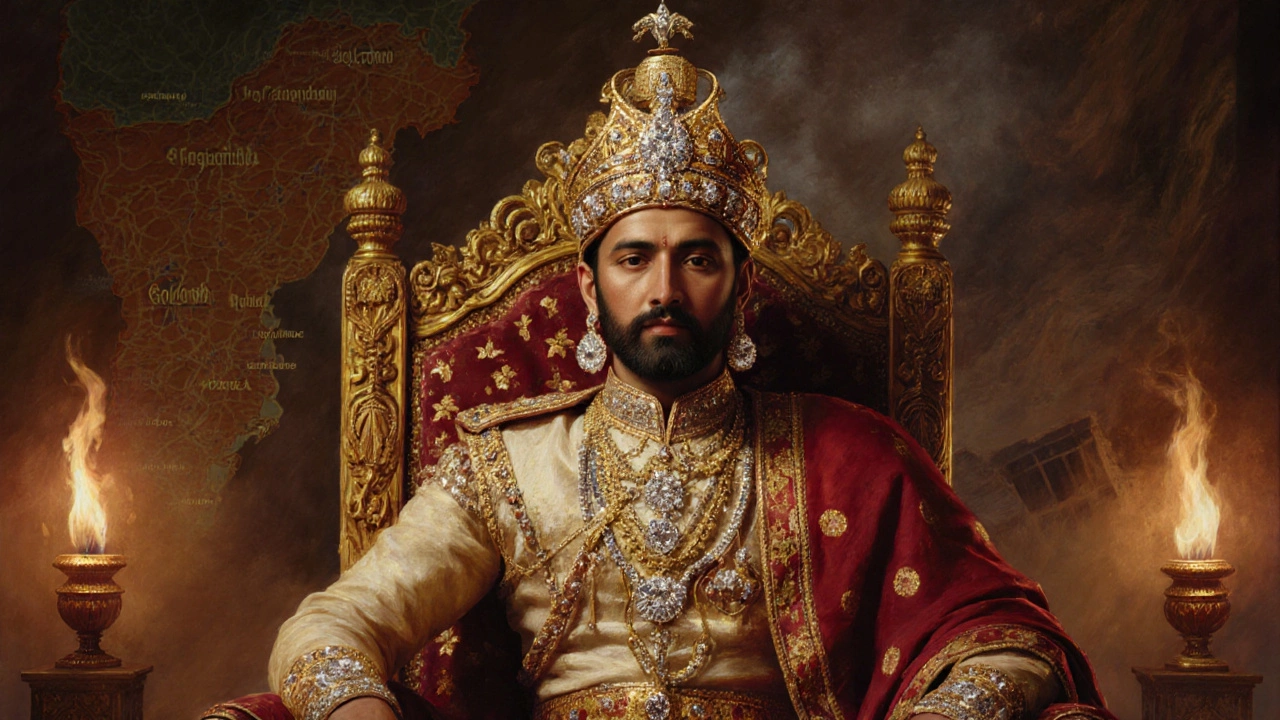
Diamond Price Estimator
Estimate diamond prices based on carat weight and type. This tool uses the pricing ranges provided in the article for natural and lab-grown diamonds in the Indian market.
Important Considerations
Based on the article:
- Natural diamonds in India range from ₹2 lakh to ₹5 lakh per carat
- Lab-grown diamonds in India range from ₹1 lakh to ₹2.5 lakh per carat
- Quality factor affects price: Poor (100% price), Average (110%), Excellent (120%)
- Lab-grown diamonds offer 30-40% cost savings compared to natural stones
Ever wondered if there’s any rule that says Indians can’t sparkle with diamonds? The short answer is yes - most Indians can wear diamonds, but the why and how are shaped by history, religion, and today’s fashion scene. Below we break down the cultural backdrop, religious viewpoints, legal bits, and practical tips so you can decide if a diamond fits your next outfit or ceremony.
Historical sparkle: how diamonds entered Indian life
Diamonds have been part of Indian heritage for millennia. Diamonds are carbon crystals that formed deep under the earth, and the first known mines were in the Golconda region of present‑day Telangana. Ancient Indian royalty prized them as symbols of power and divine favor. Texts from the 4th‑centuryCE describe kings wearing diamonds in crowns and earrings, and the famous Koh-i-Noor originated from these mines.
Because diamonds were rare and expensive, they quickly became heirlooms passed down through generations. Even today, many families keep a treasured diamond piece for weddings or special events, treating it as a lucky charm more than just a fashion accessory.
What do the major religions say?
India’s religious mosaic means that attitudes toward diamonds vary widely. Let’s look at the four biggest faiths and see where they stand.
Hinduism
In Hindu tradition, gemstones are linked to planetary influences. The planet Venus (Shukra) is associated with the diamond, believed to bring wealth, charm, and artistic talent. Many Hindus wear diamond pendants or rings during the auspicious Shukra Shanti ceremony to harness this energy. However, some conservative families avoid diamonds for women before marriage, fearing it might attract unwanted attention or be considered too ostentatious. The key is balance - a modest diamond stud or a thin band is usually acceptable.
Sikhism
Sikhs follow the principle of humility and reject ostentatious displays of wealth. The Sikhism emphasizes inner devotion over external adornment. That said, there’s no explicit ban on diamonds. Many Sikh men wear a simple kara (steel bracelet) and a modest wedding band that may incorporate a small diamond. The community generally accepts diamonds as long as they don’t dominate the overall look.
Islam
Islamic teachings stress modesty (hijab) and discourage extravagant jewelry for women. Yet, the religion does not forbid diamonds outright. A Islam permits wearing jewelry that is modest and not a source of excess. In practice, many Indian Muslim families allow a single diamond in the wedding set, typically a simple solitaire that blends with traditional gold. The focus stays on the marriage ritual rather than flashiness.
Christianity
Indian Christians usually inherit the broader Western norms of jewelry. A diamond engagement ring is common, and there’s no religious restriction on wearing diamonds for everyday life. The main consideration is personal preference and budget rather than doctrine.
Legal landscape and the Indian diamond market
Besides cultural rules, there are a few legal facts to keep in mind. The Indian government regulates diamond imports, exports, and taxation through the Customs Act and the DGFT. When buying a diamond, ensure the seller provides a Hallmark certification from the Bureau of Indian Standards (BIS) - it guarantees the claimed carat weight, cut, color, and clarity.
Customs duty on imported diamonds is relatively low (around 7.5% as of 2025), encouraging a vibrant market in cities like Mumbai, Delhi, and Bengaluru. However, clandestine trade still exists, so buying from reputable jewelers reduces the risk of synthetic stones or inflated pricing.
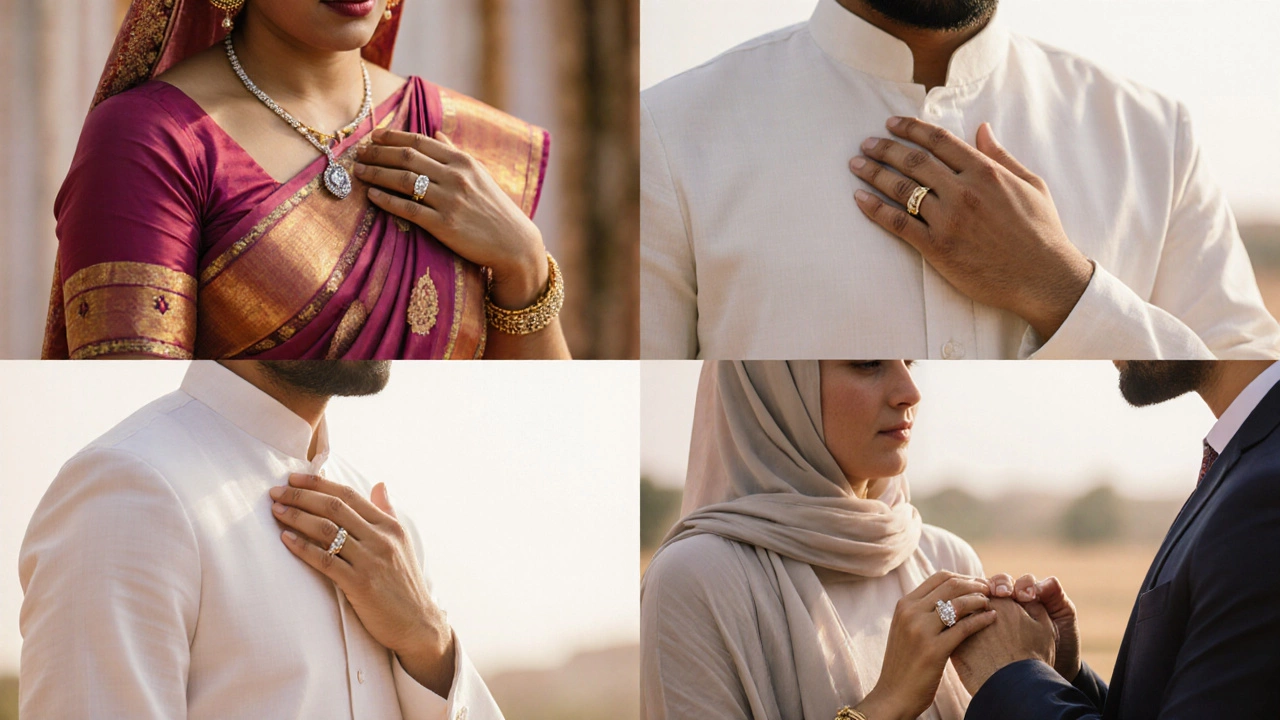
Modern trends: why diamonds are booming in India
Young Indians love mixing tradition with global style. Here’s what’s driving diamond popularity today:
- Affordability: Lab‑grown diamonds, certified by the International Gemological Institute (IGI), cost 30‑40% less than natural stones, making them popular for daily wear.
- Fusion designs: Designers blend diamond accents into traditional gold Mangal Sutra a marriage necklace for Hindu brides, creating pieces that honor heritage while adding sparkle.
- Celebrity influence: Bollywood icons regularly sport diamond earrings and necklaces at red‑carpet events, setting trends for fans.
- Online marketplaces: Platforms like CaratLane and Bluestone offer virtual try‑on tools, expanding access beyond big cities.
All these factors mean that diamond rings India is now a hot search phrase, reflecting the growing demand.
Buying guide: what to look for when choosing a diamond in India
Whether you’re eyeing an engagement ring, a pendant, or a pair of studs, keep these basics in mind:
- 4Cs - Carat, Cut, Color, Clarity. The most noticeable factor for everyday wear is cut; a well‑cut diamond shines even if the carat is modest.
- Certification - Always ask for a BIS Hallmark or an IGI/GIA report. It protects you from mis‑representation.
- Setting - In India, gold‑inset settings remain popular because gold doesn’t tarnish and pairs well with the warm complexion of many Indians. \n
- Budget - Lab‑grown diamonds let you stretch your budget for a larger carat weight while staying under ₹1lakh (approx. $1,200).
- After‑sales service - Re‑setting, cleaning, and insurance options add long‑term value.
Below is a quick comparison of natural vs. lab‑grown diamonds for Indian buyers:
| Aspect | Natural Diamond | Lab‑Grown Diamond |
|---|---|---|
| Price per Carat (2025) | ₹2lakh - ₹5lakh | ₹1lakh - ₹2.5lakh |
| Environmental Impact | Higher carbon footprint | Lower, uses renewable energy |
| Resale Value | Generally higher | Still emerging |
| Perceived Prestige | Traditional “real” status | Growing acceptance among millennials |
Pick what aligns with your values and budget. Many Indian couples now opt for a hybrid set - a gold band with a lab‑grown solitaire - to get the best of both worlds.
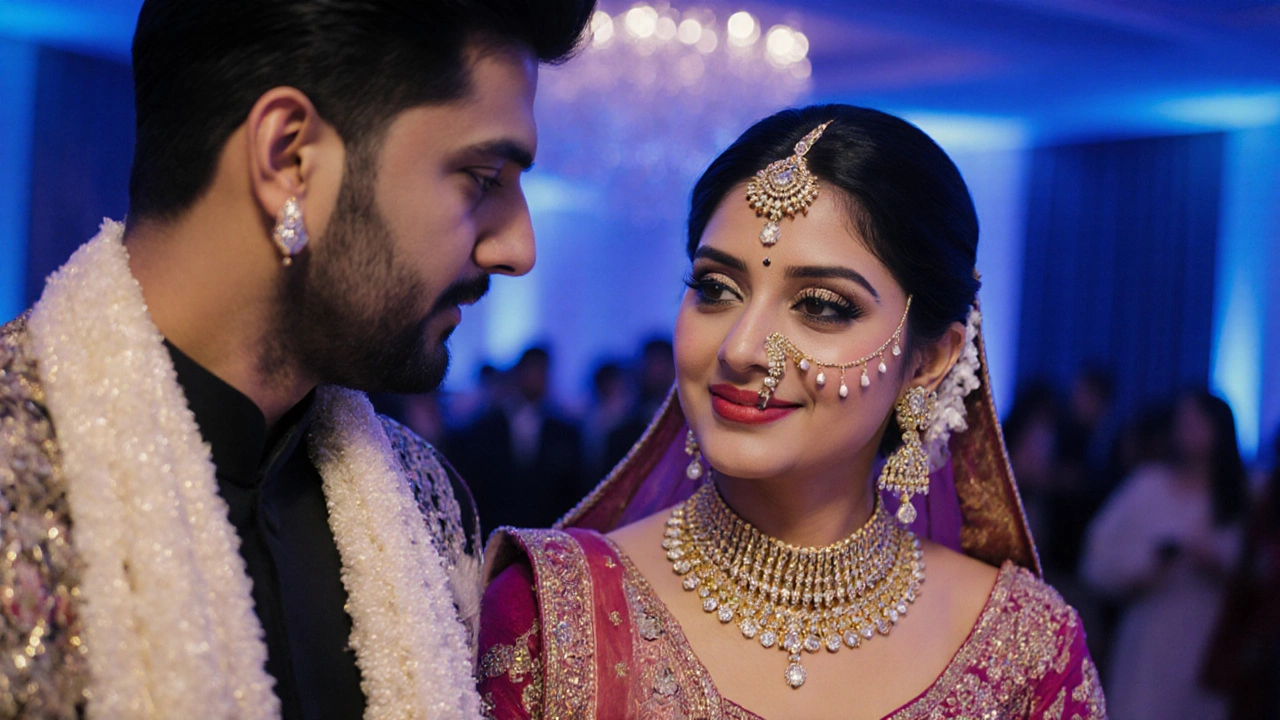
Tips for wearing diamonds with cultural sensitivity
- Match the occasion: Save larger, flashy diamonds for weddings or festivals; simple studs work for daily office wear.
- Respect family traditions: If your family prefers gold‑only jewelry before marriage, consider a thin diamond‑inset gold band instead of a full‑diamond piece.
- Know the dress code: In many temple visits, open‑neck jewelry is discouraged, so keep diamonds under a modest veil or scarf.
- Combine with traditional pieces: Pair a diamond pendant with a Nose Pin a common Indian accessory for a blended look.
Following these simple guidelines lets you enjoy the sparkle without stepping on cultural toes.
Frequently Asked Questions
Are diamonds considered inauspicious in any Indian religion?
No major Indian religion outright bans diamonds. Hinduism links diamonds to the planet Venus, Sikhism and Islam allow modest use, and Christianity has no restriction. The main concern is modesty and tradition rather than a spiritual prohibition.
Do I need a certification when buying a diamond in India?
Yes. Look for a BIS Hallmark or an IGI/GIA report. It confirms the 4Cs and protects you from fake stones.
Can I wear a diamond pendant with a traditional gold mangal sutra?
Absolutely. Many designers now create mangal sutras with diamond accents, blending heritage gold with modern sparkle.
Are lab‑grown diamonds legal in India?
Yes, they are legal and widely sold. They must still carry a certification, usually from IGI, to assure quality.
What is the best diamond size for a traditional Indian engagement ring?
A 0.5carat to 1carat solitaire set in gold is most common. It balances visibility and cultural modesty.

